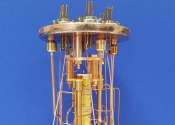Borexino experiment detects geo-neutrinos
(PhysOrg.com) -- The Borexino collaboration of about 80 scientists from six countries, who have been working with a detector buried 1.5 km beneath the Gran Sasso mountain near l'Aquila in Italy have detected geo-neutrinos, ...









